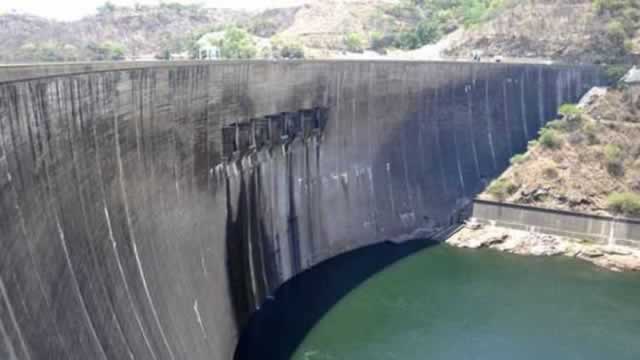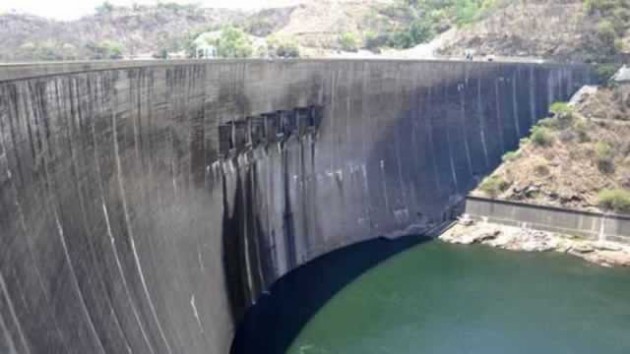COP21: Paris Summit no stroll in the park

Dr Tapiwa Mashakada Correspondent
Key challenges ahead of the second international climate change agreement in Paris, France.
FROM November 30 to December 11, delegates from 196 countries will meet in Paris, France to come up with the second international climate change agreement.
From a climate governance point of view, this 21st Conference Of Parties to the United Nations Convention Framework ( UNFCCC COP 21) which is penciled to take place in Paris at the end of November 2015, is billed as a watershed event for both developed and developing countries.
Five years ago, in 2011, COP 17 was held on African soil – in Durban.
This is where countries agreed to the Durban Platform which called for the negotiation of a new (second) agreement on the reduction of the emission of green house gases that precipitate the rise in global temperatures (a phenomenon called global warming). This new Agreement to be signed in Paris in 2015 and enter into force in 2020, will replace the Kyoto Protocol, which was the first protocol (agreement) to bind countries regarding their commitment to reduce emissions by limiting the temperature increase to 1,5 degrees Celsius.
Paradoxically, it took eight years for the protocol to garner the ratification by the majority of its members for it to enter into force.
The USA never ratified the Kyoto Protocol.
The first Kyoto Protocol (KP) commitment period ran from 2008 to 2012. The KP covered 55 percent of global emissions (GHGs).
In the meantime, between the Durban COP 17 and the Paris COP 21, there existed a dangerous gap in climate governance.
In order to address that lacuna, the KP was followed by the Bali roadmap of 2007 which mapped the way for the flopped Copenhagen negotiations, whose conclusions were downgraded from an agreement to an accord – the 2009 Copenhagen Accord. The failure to conclude an agreement was because the developing countries called for developed countries to take greater responsibility for global emissions.
Therefore, the Copenhagen Accord was not formally adopted by the COP and is therefore not legally binding.
An attempt was made to reach another agreement for a second commitment period (2013-2020). Fortunately, an agreement for that was reached in 2012 – the Doha Amendment. However, the Doha Agreement covered an even much smaller share of global emissions than the first period, which was the Kyoto Protocol. It only covered 14 percent. Again only a few developed countries agreed to ratify and commit.
In 2013, in preparation for the COP 21 Paris meeting, parties to the UNFCCC agreed to develop their own roadmap to mitigate global emissions through what is called Intended Nationally Determined Outcomes (INDCs).
INDCs represent voluntary emission targets that countries are proposing to implement post- 2020.
This is the so-called country-driven approach.
At the COP 20 meeting in 2014 in Lima, Peru, countries agreed on a template for INDCs.
The template will cover, inter alia: (a) reduction targets (b) reference year, time frame (c) sectors covered and (d) means of implementation.
To date, 146 countries representing more than 87 percent of global GHG emissions have submitted INDCs to the UNFCCC.
There are many problems that Parties are going to confront in Paris. The first problem has to do with fairness, justice and equity.
While all parties recognise the urgent need to contain green house gas emissions (GHGs) this has to be achieved by following the UNFCCC principle of common but differentiated responsibilities and respective capabilities (CBDR-RC).
It is common cause that the greatest polluters are China and America. Developing countries cannot take a disproportionate share of the responsibility of global warning. It is expected that developed countries must carry the cross.
The second teething problem is about climate change finance. Developing countries are calling for the inclusion of specific funding targets in the Paris Agreement.
The funds would support developing countries in the implementation of mitigation and adaptation programs.
The funds would also be used for capacity building and the adoption of green technologies.
Developing countries are generally afflicted by budgetary constraints.
Their fiscal revenues are shrinking while their scope of socio-economic programs demand more resources.
The World Economic Forum estimated that up to US$5,7 trillion per year may be needed in climate finance.
The sheer size of this investment is alarming, to say the least.
In 2009, developed countries pledged to mobilise US$100 billion per year by 2020 to support mitigation and adaptation efforts in developing countries.
In 2010, the Green Climate Fund (GCF) was established and has become operational.
Funding pledges to the tune of over US$10 billion at the end of 2014 were made.
The funds will go towards mitigation and adaptation in developing countries.
Part of the funds will be disbursed through a private sector facility. Developing countries want to see to it that climate funding is additional to the development aid architecture. Already some developed countries are resisting such demands.
The third problem is the legal form the Paris Agreement will take.
At COP 17 in 2011, which resulted in the Durban Platform, it was envisaged that the Paris Agreement could take one or a combination of the following three legal forms: “a protocol, another legal instrument or an agreed outcome with legal force under the Convention applicable to all Parties”.
The EU, small island states and developing countries prefer a legally binding agreement. But again for the United States, such an option is not feasible. This could result in the USA refusing to ratify the 2015 Paris Agreement.
The fourth problem is the date of implementation, which is 2020. What happens between 2015 and 2020 in terms of climate change governance?
And now that countries have made their voluntary commitments through their INDCs, who is going to be the umpire?
The fifth problem is that developing countries want the Paris Agreement to put adaptation, technology transfer and capacity on the same footing with mitigation.
The Kyoto Protocol never addressed adaptation and these other issues. Furthermore, this time around, developing countries are even calling for compensation for loss and damage to be included in the Paris Agreement.
These are legitimate demands from developing countries in view of the fact that developing countries are suffering the most from the impacts of global warning.
Droughts, floods, rising temperatures, rise in sea levels, poverty, hunger, disease, deforestation and desertification are some of the problems caused by climate change.
Developing countries are making a clear distinction between adaptation, which aims to build resilience to the risks of impacts, and compensation for loss and damage suffered as a consequence of impacts that are beyond adaptation.
The Parties are on the home stretch to Paris. Negotiators are busy working on the key elements of the Paris Agreement.
In the lead-up to Paris, the Presidents of Peru and France (COP presidents) launched the Agenda for Solutions, which is a platform to encourage actions and commitments on climate change from the public and private sectors, including civil society and financial institutions.
China and America, the biggest polluters, met in September 2015 in Washington and issued a call for an agreement that will reflect the principle of CBDR-RC) and an enhanced transparency system in the Paris outcome. China also pledged US$3 billion for South-South cooperation on climate change.
The depositing of INDCs by countries well ahead of the October 1, 2025 deadline clearly shows political will.
There is no doubt, the talks leading to the Paris Agreement will be characterised by excruciating attention to detail.
Finally, it is hoped that the Zimbabwean delegation will be comprised of a strong technical team to provide back-up to the head of the delegation.
The Zimbabwe delegation should be a highly influential delegation on the side of the Africa Group.
This delegation should include government, the private sector, NGOs, civil society and parliamentarians who are part of the Zimbabwe chapter of Globe International. Going to Paris is not going to be a stroll in the park.
The writer Dr Tapiwa Mashakada, MP, Hatfield is a member of the Parliamentary Portfolio Committee on Environment, Water, Climate Change, Tourism and Hospitality Industry; and executive director, Pan-African Institute for Sustainable Development. For feedback please contact +263 772 601 424 email: [email protected].








Comments